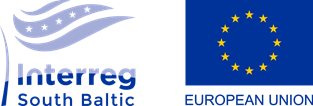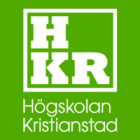Less is more
The overall idea of the project was to test new, cost-effective technological solutions, for removal of pharmaceuticals and other CECs as well as antibiotic resistant bacteria, suitable for small and medium WWTPs and to disseminate information on new technologies to the end users.
About the project
Micropollutants, or contaminants of emerging concern (CEC), referring to a number of various substances such as pharmaceuticals, biocides and endocrine disruptors, may have adverse environmental effects, especially in cases with sensitive recipients. Besides impacts on aquatic life, release of micropollutants is a threat to drinking water resources in areas where the access to fresh water for drinking water production is limited.
The reduction of micropollutants reaching the wastewater treatment plants (WWTPs) from industries, households and hospitals is poor for a majority of the contaminants. Therefore upgrading of WWTPs will be needed.
Download flyer about the project
Pilot plants in Denmark, Sweden and Lithuania
The project’s activities included demonstration, testing and validation of solutions for removal of micropollutants. Three pilot plants were designed, constructed and installed at WWTPs in Denmark, Sweden and Lithuania.
The core idea of the pilots was to develop and test separation technologies based on membrane and activated carbon processes in various combinations. Solutions were tested for improvement of the energy balance by extraction of organic rest products with high energy content resulting from membrane filtration and reuse it for biogas production. Also, the potential for reuse of treated water were reviewed.
The main target groups are WWTP’s in small and medium coastal municipalities of the South Baltic area as well as decision and policy makers: national authorities and water associations, R&D organisations, SME associations, EU water sector platforms, HELCOM and environmental NGOs.
Deliveries
• Pilot investments in technological solutions for removing pharmaceuticals and other CECs as well as antibiotic-resistant bacteria.
• Solutions focusing on separation processes developed and presented in the form of blue prints and expert papers.
Project leaders
Åsa Davidsson and Michael Cimbritz, Lund University
Partners
Main partners in the project
Lund University, Department of Chemical Engineering
Sweden Water Research AB
Kristianstad University
Slagelse Utility (SK Forsyning A/S), Denmark
Slagelse Municipality, Denmark
JSC ”Kretinga Water”, Litauen
Gdansk Water Foundation, Polen
Connected parters
Svedala Municipality
Lithuania Water Supply Association
Danish Water and Wastewater Association (DANVA)
Swedish Water & Wastewater Association (Svenskt Vatten)
Swedish Agency for Marine and Water Management (Havs- och Vattenmyndigheten)
WIN – Water Innovation Accelerator



